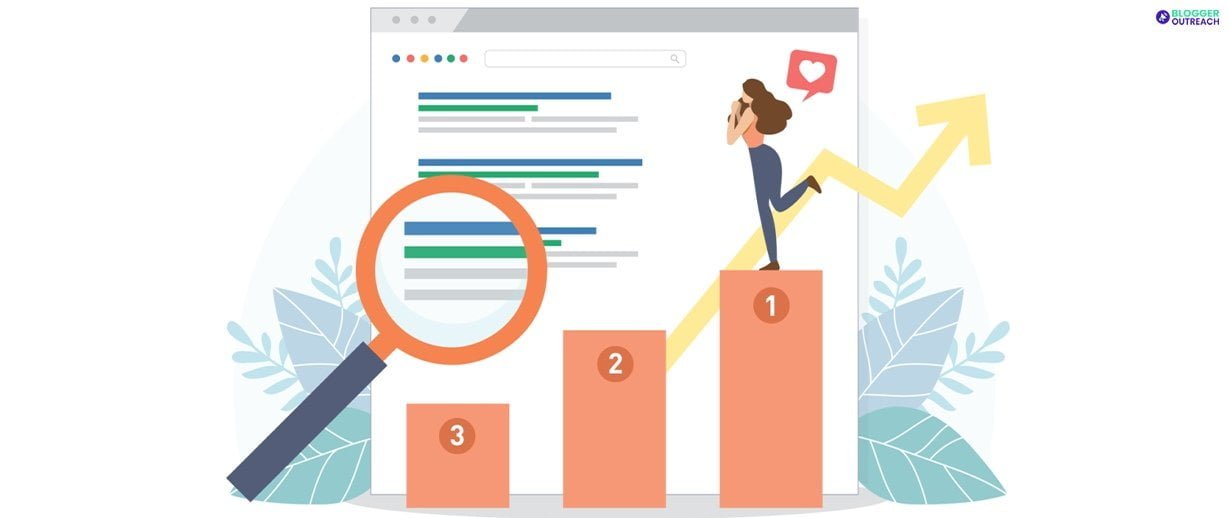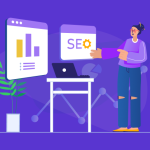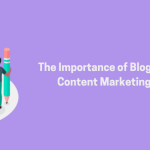Table Of Content
- 1 What Is The Root Cause Behind Ranking Fluctuations?
- 2 How To Respond To SEO Ranking Fluctuations?
- 3 Top 8 SEO Ranking Factors
- 4 Ready To Deal With SEO Fluctuations? Boost You SEO Ranking Now!
Your high-performing articles suddenly stopped attracting traffic, and you’re getting frustrated?
Relatable?
Ranking fluctuation is the sudden drop and spike of ranking on the SERP pages.
If you have been in this SEO space for a long time, you know that SEO ranking fluctuations for the second half of the first page are normal. It happens a lot of times.
Whereas, if you’re ranking on the first half of the page, it doesn’t mean it will stay there for a long time.
Let’s be honest with you. You can’t completely overcome SEO ranking fluctuations, as there are a plethora of ranking factors that are beyond your control.
So, as an SEO practitioner, you should know what to expect from these ranking fluctuations and how to respond to them.
What you can do is – know the art of dealing with and reducing SEO ranking fluctuations.
Moreover, for the dais reason, This guide comes in handy. Here we will discuss the methods to reduce SEO ranking fluctuations and the 8 most important ranking factors.
Let’s Begin!
What Is The Root Cause Behind Ranking Fluctuations?
As a team of Digital marketing experts, we have been there! We know that this happens – one day, you see the higher ranking, and then suddenly, a DROP.
So, let’s understand the reasons behind ranking fluctuations:
1. Algorithm Updates

Algorithm..algorithm..algorithm – the nightmare of every SEO practitioner.
Most of you see a ranking drop due to algorithm updates:
- A new algorithm comes in.
- Update of an existing algorithm.
Once a new algorithm rolls out, it takes a week to impact the SEO rankings.
We agree that algorithms are the key to ranking fluctuations. However, that doesn’t mean you’ll be completely surprised.
2. Search Engine Penalties
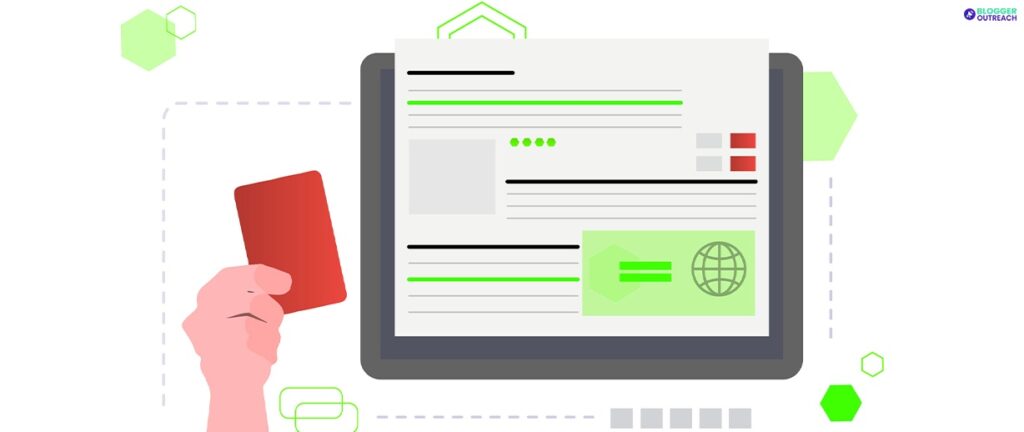
If you dig deep into every penalty, you’ll find many factors responsible for it – off-page factors and on-page penalties. Let’s say someone has performed keyword spanning, collected low-quality links, etc.
3. Technical Factors

Only a few people know that technical glitches can negatively impact to crawling on your site. For example, let’s say your site takes a lot of time of time in loading. In such case, crawlers find it defunct to access your site and fetch the necessary information from your site. This can also happen due to web hosting services. If your site cannot provide optimal user experience, it won’t be considered a credible source of information.
4. Competitors

This SEO landscape is always evolving. Don’t consider that you know everything about SEO. Any day, anytime, your competitors can outperform you. You can see a major ranking drop because you cannot resist the competition.
Let’s say you have written a 1500-word article. However, your competitor presented the same article in a different way that is more thorough, consists of 2500 words, and solves the user’s problem. Here, evidently your competition outdoes you.
Now you know the reasons behind the disease called SEO ranking fluctuations. It‘s time for a cure…
You May Like To Know About: 30 Essential SEO Tips & Techniques
How To Respond To SEO Ranking Fluctuations?
Don’t be stressed out! Chances are higher that it is a temporary change. Instead of panicking, you must investigate what went wrong.
The first step is to perform a simple Google SEO ranking check of your competitors. There is no reason to panic if your competitors have also faced a ranking drop.
However, if your competitor has picked up the pace and outperformed you – it’s time to tackle them. Thanks to preventive and tactical strategies, you can regain your position. Here is the best practice you can follow:
- Website speed matters a lot. Keep a close eye on your site speed. In case of any issue, please discuss it with the developer and sort it out. Site speed comes under the on-page ranking factor and demands serious attention from a site owner. If you see through the eyes of Google, having a slow side portrays a bad impression and impacts your credibility. Plus, a slow side encourages a higher bounce rate. As a result, you’ll see a negative impact on your SEO ranking.
- Anything that seems unnatural is a red flag from the standpoint of Search engine algorithms. Let’s say you are building links at a rate that seems a black hat approach; you’ll experience a drop in your ranking.
- Last but not least. Content is one of the most important ranking factors in SEO. Here you need to ensure that you provided updated content. Let’s say you wrote an article entitled ‘5 digital marketing tips in 2020’. Now, you can’t expect the same article to perform in 2023. Information that was relevant in 2020, not necessary, will remain relevant in 2023. You need to update your content here. The updated article might take some time to get ranked. However, it is worth your effort.
So, you get an idea about the SEO ranking fluctuations at this point. However, it is not over yet. As promised, we will talk about eight crucial SEO ranking factors, but no the time has come to talk about hem.
Top 8 SEO Ranking Factors
Some say there are more than 200 ranking factors available. However, the list shared below will only talk about the important factors. Let’s dive in!
1. Content Is King

We don’t know how often we need to reiterate that content is the ultimate winner. Yes, that is the universal truth of this SEO word. Many factors come and go. However, the importance of content never fades away.
Your pages are like your digital library. If you cannot provide value to your users – it is simply useless.
The importance of content is not only restricted to site owners but also relevant to top brands. High-quality content comes with the following factors:
(i) Understanding Search Intent
Search intent is understanding the reason for bedding a search query. Let’s say someone has searched ‘SEO agencies.’ Once you read the keyword, you’ll understand that someone may be looking for an SEO agency. And then, you tailor your content accordingly.
Ask these questions yourself:
What is the person expecting from you? How can you solve their problem thrush your content?
(ii) First Hand Knowledge
Google prefers content tat comes from personal experience. And that is why they are extensively discussing E-E-A-T (Expertise, Experience, Authority, and Trust).
So the person writing the blog or the article should possess expertise in the topic and have experience in that field.
2. Mobile Optimization

Do you have a mobile version of your site?
You must have a mobile optimized site that is up-to-dated.
Sound good?
This is because almost half of the search queries are from mobile.
Ensure that you have a mobile version of your site. It must consist of a URL that is optimized for mobile. All the elements of your mobile optimized site must be in order. Strive for ensuring a fast loading speed.
3. Page Experience
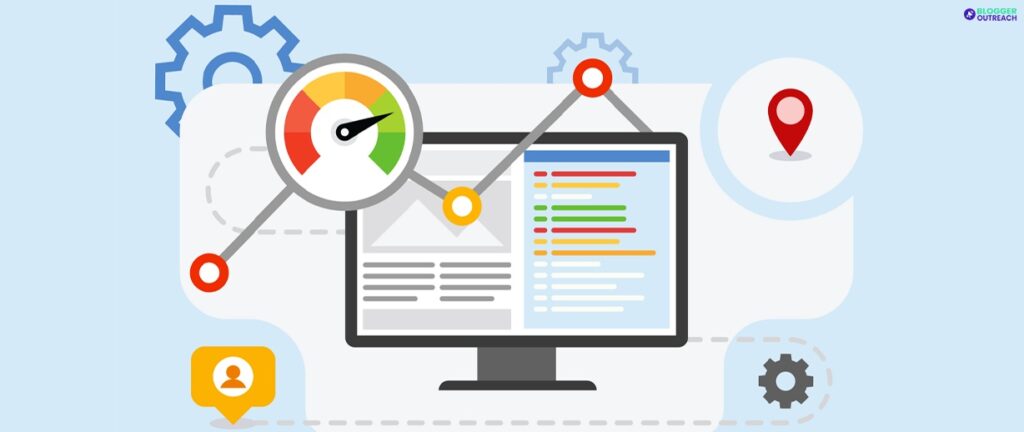
Let’s see the factors that play a big role in providing optimum page experience.
If you don’t consider improving your user experience, you’ll be on the looser side. Put yourself into the shoes of your users. Do you even engage with a site with poor content and layout? A big NO!
So why do you even expect your users to engage with you?
Providing optimum user experience is a vital SEO strategy that brings rank. It could include – good content, a clear call to action, an attractive layout and fonts, etc.
(i) Architecture Of The Site
Once of the noticeable stumbling block of SEO rankings is site architecture. After the Page Experience Update rollout, site architecture became more evident.
Simply put, site architecture refers to functionality of your site. Is it easy to use? Site architecture comes with:
Seamless navigation throughout the site.
Helps the search crawlers to access and fetch information from more pages on your site.
If you want to make your site easy to use, your users shouldn’t take more than three to four clicks to find any page.
(ii) Core Web Vitals
To provide the users with optimum user experience, in 2020, Google rolled out the core web vitals.
Core Web Vitals consists of three components:
Largest Contentful Paint (LCP) – Basically, Google uses the loading time of the biggest part of your website to determine how fast your website is. This biggest part could be a picture or some text. To be considered a good website by Google, your LCP (Largest Contentful Paint) should happen within the first 2.5 seconds.
First Input Delay (FID) – FID (First Input Delay) is about how quickly a user can interact with your website once they visit you. This is super important, and Google uses it to measure how interactive and responsive your website is. According to Google, the best FID is around 100 milliseconds.
Cumulative Layout Shift (CLS) – The metric called CLS (Cumulative Layout Shift) is all about how stable your website is while it’s loading. Do you know those frustrating moments when you’re trying to read something or click on a button, but the page keeps shifting around, and you end up clicking the wrong thing? That’s what CLS measures. Google wants websites to have a CLS of less than 0.1 for the best user experience.
(iii) HTTPS
Having a secured connections is important to become a credible site. Here you must secure your site with HTTPS.
(iv) Ad Experience
Back in 2017, the ad experience update came into effect keeping the chrome user into mind. If Google found you violating the ads standard, Chrome can remove all of your advertisements.
4. Optimize Your Page Speed
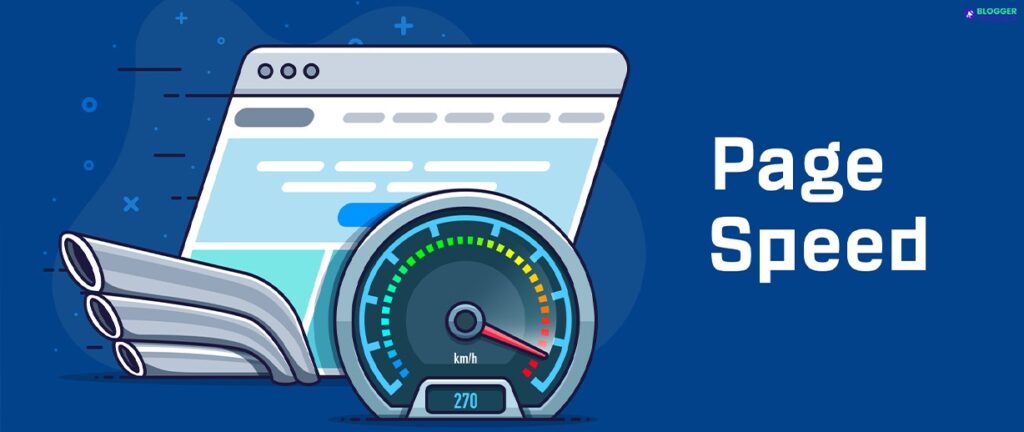
Faster your site loads, lower the bounce rate. In turn, you improve your chances of attracting higher traffic to your site.
So, if you want your website to rank higher in search engine results – you must optimizing your page speed.
Now The Question Is What Can You Do To Improve Your Page Speed?
- You can begin your efforts by reducing the size of your images Large, images take longer to load. It is better to compress them to a smaller size. There a tolls available online that can help you in this regard.
- Minimize the number of HTTP requests! Every time a page loads, it makes multiple HTTP requests to load images, CSS files, and other assets. The more requests your page makes, the slower it will load. You can reduce the number of requests by combining CSS and JavaScript files and optimizing your code.
- Another great way to do this is caching. When a user visits your website, the browser stores static resources like images and CSS files in a cache. This means that the next time the user visits your website, these resources will load faster from their cache rather than having to be re-downloaded from the server.
5. On Page SEO Optimization
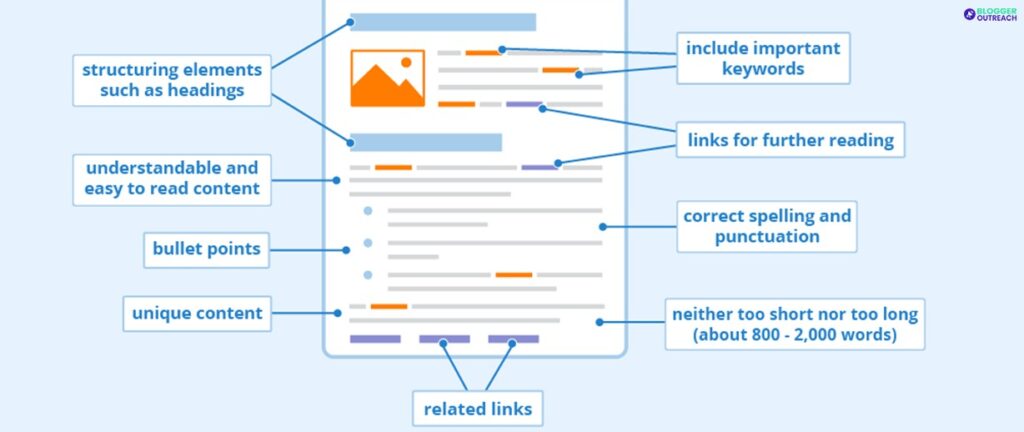
SEO rankings consider several on-page factors.
You can start your page optimization journey through keyword research. Keywords are the words or phrases you use to search for something online. Once you perform keyword research, you understand the terms people use to get specific information. After you know this, you place them naturally without disrupting your content’s flow. Please refrain from doing keyword stuffing, as it can lead you to a search engine penalty.
The next thing you can consider is optimizing your meta tags. Meta tags are HTML elements that tell the search engine about your page. These consist of the following:
- Title tag
- Meta description
- Header tags
Optimizing these tags with relevant keywords and descriptions improves your website’s relevance to the algorithm.
We have already discussed the content. However, we have yet to tell you the importance of Optimizing your content. Optimizing your content is like adding spice to your recipe.
It Includes:
- Maintaining keyword density.
- Using header tags to break up your content into smaller sections makes it easier to read and understand.
Lately, you must optimize your content for feature snippets. Feature snippets are extracted from your content directly visible on search engine result pages. If your answer is on point, the search engine will promote your content in the featured snippet.
6. Robust Internal Linking
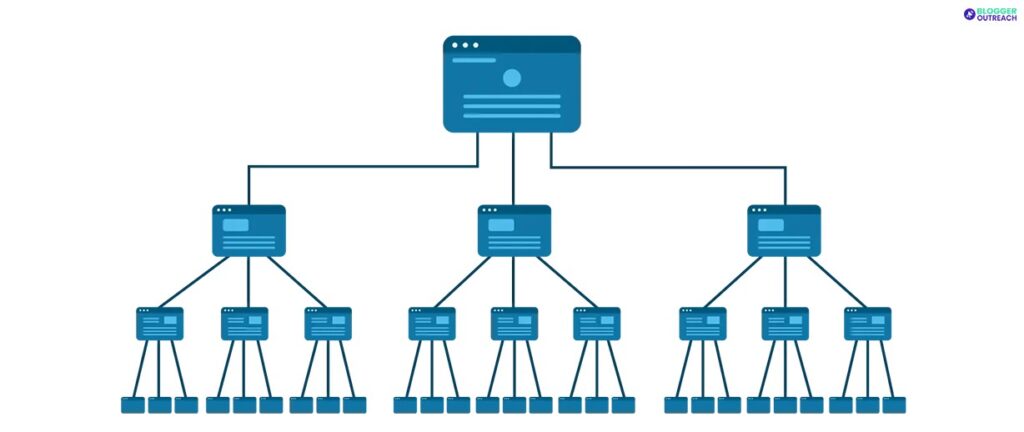
Picture this: Your house has 10 rooms, however, they are not connected to each other. You have access to each room with separate doors. What about having a home where every room is linked to each other through a series of doors?
This analogy applies to internal linking as well. Better your internal linking, higher the accessibility of your content.
Once thing that you must consider here is that your internal linking must be user-centric. After doing that, you can think of driving traffic to our site.
Here Are The Key Areas That You Need To Pay Special Attention To:
- How to help your users.
- Identifying the right way to manage your link flow.
- To build a roadmap revolving around specific content ideas.
- Give priority to index some pages.
7. Build Quality Link
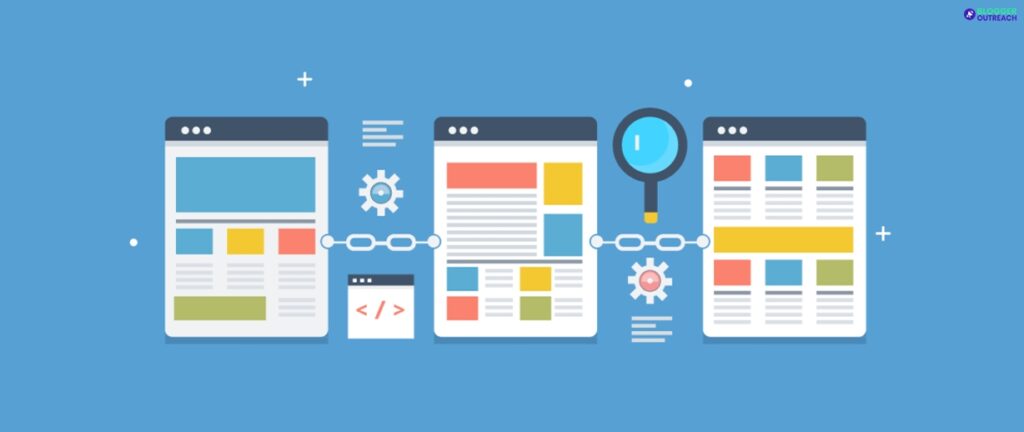
Collecting links is one thing, and collecting high authority links another. Don’t pay heed to any sort of rumors.
Inbounds links (backlinks) are important in SEO rankings, especially in building your credibility.
However, do not build links for the sake of doing so.
Inbound Links Must Come From Sites:
- That are relevant to your website.
- That comes with authority and right metrics (DR, DR, etc.)
While the importance of links are not the same as they used to be – experts still consider them as a ranking signal.
8. Optimize For Local Searches

According to Google, there are three key components of Local SEO rankings.
(i) Relevance
It is how well you or any business addresses a search query. It’s an important pillar of Google local rankings.
When you put your business on websites like Google My Business or Bing Places – it’s important to include all the important details like your name, address, phone number, and other relevant info.
This helps search engines figure out what your business is all about and how it relates to what someone is searching for. So, ensure you fill out all the info as much as possible to help your business get found more easily!
(ii) Distance
When we focus on distance, we mean how near or far your business located to the searcher. Shorter the distance, higher the chances of getting discoverable on the local searches.
(iv) Prominence
How many people know you? Prominence refers to popularity. You can build your prominence from across the web: links, articles, directories, etc.
Ready To Deal With SEO Fluctuations? Boost You SEO Ranking Now!
Ranking factors and SEO fluctuations go hand-in-hand. If you have a detailed understanding of the factors, chances are higher that you can easily deal with those factors.
Your aim this point is to curate a comprehensive SEO strategy, for optimum performance. You must know how to check seo ranking, move forward strategically. For doing so, you can leverage any seo keyword ranking checker.
Read Also:

